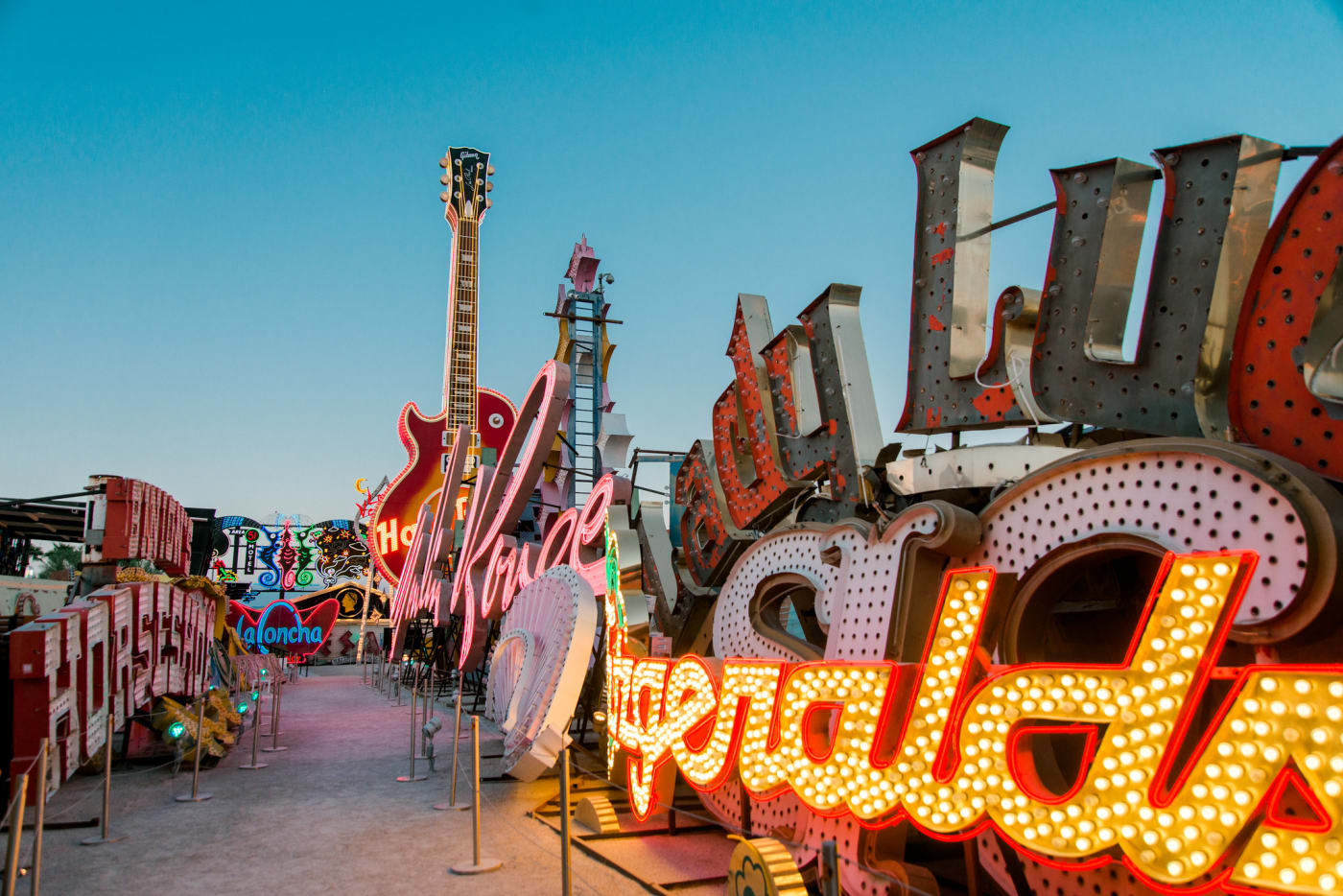Chief Hotel Court

Please position yourself in front of the Chief Hotel Court signage, located between the Palms Casino Resort and the Nevada Motel signs.
Both neon and argon are featured on the Chief Hotel Court signage, portraying a polychromatic—or multicolored—design of a stereotypical Plains Indian motif, a recurrent aesthetic used to portray Las Vegas as an Old West town. Not representative of the Southern Paiute Tribe and other indigenous peoples who are native to the Las Vegas Valley, this misrepresentation of Native American imagery in branding, mascots, and advertising has directly contributed to the erasure of Native American voices and perspectives.
The Chief Hotel Court signage—the oldest operational sign in The Neon Museum’s collection—is believed to have been inspired by the train cars from the Atchison, Topeka, and Santa Fe Railroad, which once featured similar branding. Other properties on the Las Vegas Strip that utilize indigenous symbols as an inspiration for their architectural design include the Sundance Hotel and the Thunderbird Hotel. Opened in 1948, the Thunderbird’s name and aesthetic were connected to the Native American thunderbird mythos, reflected in everything from its signage, the property’s public fireplaces, and its Pow Wow Showroom.









